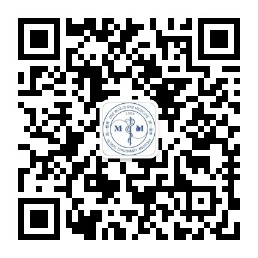目的探讨射频联合阿霉素对癌性胸痛的干预效果及其机制。方法选取120例中晚期或术后乳腺癌、肺癌等引起胸痛的患者,随机分成射频组、阿霉素组和联合组,每组40例。三组均在相应椎体旁2.0~3.0 cm处行脊神经阻滞,15 min后射频组在DSA下给予连续射频毁损术,阿霉素组在脊神经干处注射阿霉素,联合组在连续射频毁损术后给予对应脊神经干注射阿霉素。三组均采用MPQ表及VAS表评定治疗前后患者疼痛情况,以探讨射频联合阿霉素对癌性胸痛的干预机制及临床疗效。结果与治疗前比较,治疗后三组疼痛评分均明显下降,且联合组下降更明显,差异具有统计学意义(P<0.01)。联合组总有效率明显高于射频组和阿霉素组,差异有统计学意义(P<0.05),两组总有效率比较,差异无统计学意义(P>0.05)。结论射频联合阿霉素治疗癌性胸痛疗效优于单纯射频热凝治疗或者阿霉素阻滞治疗,而射频热凝治疗与阿霉素阻滞治疗疗效相似。射频联合阿霉素是治疗癌性胸痛的较好方法,值得推广和应用。
当前位置:首页 / 射频联合阿霉素对癌性胸痛的干预效果及其机制研究▲
论著
|
更新时间:2017-01-05
|
射频联合阿霉素对癌性胸痛的干预效果及其机制研究▲
Study on intervention effect and mechanism of radiofrequency combined with adriamycin on patients with cancerous chest pain
微创医学 201606期 页码:844-846+865
作者机构:湖北省咸宁市中心医院暨湖北科技学院附属第一医院康复医学科,咸宁市437000
基金信息:▲基金项目:湖北省重大科学技术成果(编号:EK110652)、湖北省咸宁市科学技术奖(三等奖)
作者简介:冯美果(1976~),男,硕士,副主任医师,研究方向:脑病神经康复及疼痛介入。
- 中文简介
- 英文简介
- 参考文献
ObjectiveTo explore the intervention effect and mechanism of radio-frequency combined with adriamycin on patients with cancerous chest pain. MethodA total of 120 patients with chest pain caused by breast cancer or lung cancer at advanced or postoperative abdominal surgery stage were randomly divided into radio-frequency group,adriamycin group and radio frequency and combination group,40 cases in each group. At first,patients in both groups were given subarachnoid root block with chemical agents at a 2.0-3.0 cm painful area beside the corresponding vertebral body, then patients in radio-frequency group were given continuous radio-frequency damage under DSA after 15 minites,while patients in adriamycin group were given adriamycin injection in the spinal nerve stem,the combination group were given adriamycin injection in corresponding spinal nerve stem after continuous radio-frequency treatment. The pain situation of the three groups were evaluated by MPQ scores and VAS scores before and after treatment, aimed to explore the intervention effect and its mechanism of radio-frequency combined with adriamycin on patients with cancerous chest pain. ResultsThe pain scores of the patients in both groups were significantly decreased after treatment compared with those before treatment,and the decreased degree in combination group was more obviously than those of radio-frequency group and adriamycin group, the differences were statistically significant(P<0.01); The total effective rate in the combination group was obviously higher than those of radio-frequency group and adriamycin group, the differences were statistically significant(P<0.05); The total effective rate in the radio-frequency group was similar to that of the adriamycin group,the difference was not statistically significant (P>0.05). ConclusionRadio-frequency combined with adriamycin therapy has a better efficacy in treating patients with cancerous chest pain than that of radio-frequency thermal condensation or doxorubicin block therapy merely,while the efficacy of radio-frequency thermal condensation was similar to adriamycin block therapy.So,radio-frequency combined with adriamycin is a better method in treating patients with cancerous chest pain,which was worth popularization and application.
-
无




 注册
注册 忘记密码
忘记密码 忘记用户名
忘记用户名 专家账号密码找回
专家账号密码找回 下载
下载 收藏
收藏
